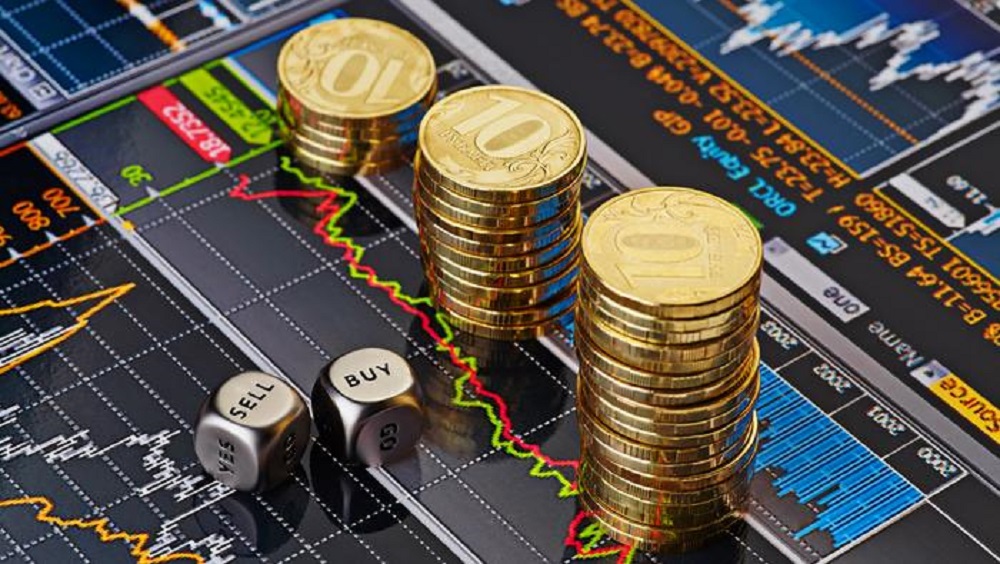
What Is Leverage in Forex Trading?
- Why Is Leverage Used in Forex Trading?
- How Does Leverage Work in the Forex Markets?
- Unpacking Leverage Ratios
- An Example of Leverage in Action
- What Are the Risks Involved With Leverage?
- How to Reduce the Risks Associated With Leverage
- Final Thoughts
The use of leverage in forex trading is the process of using borrowed funds to increase your trading position.
Leverage is offered by brokers and allows traders to hold positions beyond the limitations of their cash balance, which can significantly increase their return on investment. It does, however, also increase risk and can amplify losses.
Leverage should be carefully considered and used sensibly. It is important to always employ a solid risk management strategy. Consistent returns should be prioritised over risky trades that have the potential to do financial damage if the market was to move in an unexpected direction.
This article will explore the use of leverage for forex trading in greater detail, particularly regarding the risks involved and how these can be partially mitigated.
Why Is Leverage Used in Forex Trading?
In forex trading, investors use leverage to maximise the profits they can make from currency fluctuations.
In the forex market, currency fluctuations are very small pip movements. This means that the profit made on each trade tends to be small, hence the pace of forex trading and the large number of trades required to make a substantial profit.
Note: A pip is the smallest exchange price movement that can occur between a currency pair and stands for ‘percentage in point’.
With the use of leverage, traders can carry out larger currency transactions – opening orders much greater than their capital allows – which can translate price movements into more sizable profits.
Leverage allows forex traders to see increased movements in their accounts as without leverage, movements would be small and dependent upon the capital the trader tangibly has. With leverage, traders could easily see a 10% movement in a day, meaning vastly increased profits.
How Does Leverage Work in the Forex Markets?
When trading in the forex market, traders tend to be able to secure much higher leverage than they would in other markets – the stock market, for example.
To put the high leverage amounts available in the forex market into perspective, a leverage ratio of 2:1 is usually provided in the equities market and 15:1 leverage ratio in the futures market. Leverage in forex tends to be offered at a ratio of 50:1 and above.
_Note: ‘_Equity market’ is another term for the stock market. Futures are financial contracts which obligate the buyer/seller to deliver a specified amount of a certain commodity on a certain date. The futures market is an exchange to buy and sell these futures contracts.
The leverage offered in forex is higher because currency prices usually fluctuate less than 1% in an intraday period, meaning that the risk to the lender is less.
The money is usually borrowed from the forex broker who is handling the trader’s forex account. To borrow the money, the trader will need to open a margin account.
While leverage is often defined by traders as a line of credit provided by a broker to their client, leverage does not have the features that come with credit. There is no deadline for settling the leverage provided by the broker and no interest.
A high leverage offer in forex trading means that a trader can control a large amount of money for a comparatively small initial margin requirement.
Note: An initial margin is the percentage of the purchase price of a security that needs to be covered by either cash or collateral when using a margin account.
The Best Trading Platforms
Let’s take a look at the best trading to earn more.
1. Liteforex
Best for: Learning from others
Liteforex is one of the most popular online reliable brokers over the world. Over the past 15 years, it has developed a strong reputation for beginners and experienced investors alike, has a minimum $100 deposit.
The Liteforex app aims to use easy for every clients. It is available on Google Play and the App Store and allows you to move seamlessly between devices.
It’s innovative features include:
- Pre-programmed one-click trading
- Copy Trader – Copy the trades of others in real-time
- Its own social networking platform
- Pre provided investment strategies which they call Copy Portfolios
The app boasts the ability to allow you to place online trades even if the trading platform is down.
The information is being presented without consideration of the investment objectives, risk tolerance, or financial circumstances of any specific investor and might not be suitable for all investors.
2. FXTM
The FXTM Platform itself is intuitive and easy to use, suitable for those just getting into trading and those more experienced alike.
It is designed to offer a full replication of an institutional trading environment including depth of market.
With advanced risk management and order functionality, this is a detailed platform for trading stocks.
The FXTM app offers a premium range of order types, with advanced technical analysis tools.
You can set up push and email notifications for the important things that you want to know in relation to your stock trading needs – such as price alerts and trade statistics.
Within the app, you can:
- Complete a range of order types
- Work with all your accounts in one app
- Understand detailed trade analysis
- Review detailed order tickets – base currency dollar value and pip distance
As a platform, there are comprehensive educational videos and explanations of symbols, so you can find optimized processing for expert advisors and indicators.
The information is being presented without consideration of the investment objectives, risk tolerance, or financial circumstances of any specific investor and might not be suitable for all investors.
3. FBS
Best for: CFDs
This app is designed for those wanting to trade outside of the US. It is considered one of the best for CFDs on shares and has a minimum $100 deposit.
There are low trading fees but considerable fees for inactive users.
The educational section is average, as are the research tools. However, the app is easy to use overall.
This app is recommended for those familiar with CFDs and who are actively trading. Reviews of the app show that users like the:
- Account-opening process
- Deposit and withdrawal features
- Customer service
- Actual trading platform
The information is being presented without consideration of the investment objectives, risk tolerance, or financial circumstances of any specific investor and might not be suitable for all investors.
Unpacking Leverage Ratios
In forex trading, the leverage offered will depend on the broker, the size of the account and the size of the position the trader intends to make.
The leverage will have a minimum deposit in place for use. The leverage provided is usually 50:1, 100:1 or 200:1.
- 50:1 – This leverage ratio means that for every £1 you have, a trade of up to £50 can be placed. This means that for a deposit of £500, you would be able to trade up to £25,000 on the FX market.
- 100:1 – This leverage ratio means that for every £1 in your account, you can place a trade of up to £100. On a standard lot account, this is the typical amount of leverage offered. The minimum deposit tends to be £2,000.
- 200:1 – A leverage ratio of 200:1 means that you can place a trade of up to £200 for every £1 in your trading account. This is the leverage ratio that tends to be offered on a mini lot account. The minimum deposit required is logically lower than that on a standard lot account, with an amount of £300 usually requested.
- 400:1 – A ratio of 400:1 means that for every £1, a trade of up to £400 can be placed. Whilst a ratio of 400:1 is offered by some brokers for mini lot accounts, it should not be offered on small accounts. Trading with a small deposit on a 400:1 ratio could finish your foray into trading in less than five minutes.
It is important to be sensible with the ratios you choose to trade with. You do not need to trade on the highest ratios that brokers offer; you can trade on a more conservative leverage amount by depositing more money and making fewer trades.
Just because the leverage is available, does not mean that you need to or should use it.
Leverage amounts such as 10:1 and 20:1 are most commonly used by professional traders. Experience will teach you when to use leverage and when it is best to avoid it but, as a rule of thumb, the less leverage used the better.
It is better to be cautious and have the capital to trade for longer, rather than wiping out all of your capital resources early on.
An Example of Leverage in Action
When using leverage, a loss can build up rapidly. The example below displays just how easily this can happen:
Trader A and Trader B both have capital of £10,000. Their broker requires a 1% margin deposit.
Scalping analysis indicates that taking a position on GBP/JPY should be profitable, so they short the GBP/JPY at 120 as they believe it is about to fall.
Trader A uses a leverage ratio of 50:1 taking a position sized at £500,000 (50 x £10,000 trading capital).
Trader B is more cautious and applies five times leverage and takes a position of £50,000 (5 x £10,000 initial trading capital).
The short was made at 120.
One pip for one standard lot = approx. £8.30, so one pip movement for the five standard lots = approx. £41.50.
The pip movement goes against these traders and rises to 121
Trader A has lost 100 pips, equivalent to £4,150. This is 41.5% of their total trading capital of £10,000.
Trader B has also lost 100 pips, but due to the lower leverage used this is equivalent to £415 and a loss of only 4.15% of total capital.
If the trade had gone the way the traders had hoped and expected, Trader A would have made substantially more profit than Trader B. Unfortunately, the high leverage used by Trader A made them extremely vulnerable if the trade did not evolve as predicted.
Trader A only has 58.5% of their trading capital remaining, whereas Trader B still has 95.8% of their capital intact. As a consequence, Trader B is in a much stronger position to make a profit going forwards.
Myanfx-edu does not provide tax, investment or financial services and advice. The information is being presented without consideration of the investment objectives, risk tolerance, or financial circumstances of any specific investor and might not be suitable for all investors.
Financial Trading is not suitable for all investors & involved Risky. If you through with this link and trade we may earn some commission.

What Are the Risks Involved With Leverage?
Leverage provides traders with the opportunity to increase their positions and make significant profits through the ability to fully exploit currency fluctuations. When using leverage, however, traders should be aware that while leverage can amplify gains in forex trading, it also amplifies any losses.
Leverage should be used wisely, alongside a realistic risk management strategy. Much of the risk in trading comes from the amount of leverage on the trade, not the movement of the asset itself.
When making a currency trade with values in excess of £100,000, even small fluctuations can result in huge losses or profits.
Forex traders should be sensible – they should not use all of their available margin, and only employ the use of leverage when the advantage is distinctly on their side.
Professional traders usually trade with very low leverage. Low leverage protects you from the financial impacts of trading mistakes and keeps your gains consistent.
There are certain situations when leverage should not be used; for example, in automated trading. This is the case because less discretion can be used.
Financial agencies and brokerages that offer leverage provide leverage warnings reminding traders about the high risk to their capital.
It is, however, important to remember that, when used correctly, leverage can be an efficient use of capital and its employment greatly widens the scope of the trading an individual can partake in.
How to Reduce the Risks Associated With Leverage
Using leverage to increase your trading position makes you more vulnerable. To reduce risk and control losses, forex traders tend to implement strict controls when trading using leverage by imposing stop-loss orders.
Stop-loss orders protect trades from unexpected market shifts. A stop-loss order is an instruction given to the broker that the trade must be exited when it reaches a certain price. When entering a trade, it is good practice to carefully consider the point at which you will exit and set up a stop-loss order indicating this figure.
Even if traders follow market trends closely, the volatility of the forex market means the protection from a stop-loss order is invaluable in protecting against the accumulation of small losses.
When you use a stop-loss market order to set your stop-loss price, as soon as the price nears your limit, a market order is automatically sent by the broker to close your position at the current price.
It is worth noting that stop-loss market orders differ from a conventional market order. With a market order, a trader outlines that they wish to trade a certain number of shares of a stock at the current market-clearing price. Basic market orders do not allow traders to set an exit price.
Using a stop-loss market order instead allows the investor to specify their limit price.
Depending on the conditions of the market, however, the trade may not be exited at exactly the stop-loss price. This difference is referred to as slippage.
A type of combined order referred to as a stop-loss limit order helps to eradicate losses from slippage. When the specified price is reached, a limit order is sent and the trade is made only at that price or better.
Final Thoughts
Using leverage has the potential to magnify the profits a forex trader can make from small market movements. With a low margin requirement, traders can leverage large amounts and make sizable trades that would not have otherwise have been possible.
To be successful and make a profit from forex trading, however, it is vital to use leverage responsibly. Traders must not max out the leverage that they have been offered by their broker.
As it has been stressed, trading with leverage can boost profits but also magnify losses. Due to the high volatility of the forex market, setting a stop loss when trading is highly recommended.
Used sensibly, leverage can be a useful tool to enable efficient use of capital and make enlarged profits. Always remember though, traders should only ever speculate with money that they can afford to lose.
Myanfx-edu does not provide tax, investment or financial services and advice. The information is being presented without consideration of the investment objectives, risk tolerance, or financial circumstances of any specific investor and might not be suitable for all investors.

Planning a Successful Long-Term Forex Strategy
- Why Is a Long-Term View Important?
- What Are the Benefits of Long-Term Forex Trading?
- Top Tips for Trading Long Term
- Change Your Mindset
- Set a Profit Target and Stop Loss
- Have a Strategy and Stick to It
- Look at Weekly Charts and Trends
- Use Very Small (Or No) Leverage
- Swing Trading
- Factor in Your Costs
- Final Thoughts
Many forex traders find success using long-term trading strategies. Taking a long-term approach, also referred to as ‘big picture’ forex trading, involves keeping hold of a transaction for a long period while considering all the factors that affect a currency pair.
With the right planning and execution, one long-term position can be more successful than several short-term positions. When it comes to forex strategy, ‘long term’ refers to trades that can go on for days, weeks, months or even a year or more.
This method is sometimes known as positional trading, as it involves holding one position for an extended term.
Although long-term trading strategies can be lucrative, they probably suit a certain personality type that is willing to be patient and forgo the excitement of short-term trading.
Why Is a Long-Term View Important?
Although short-term trading (such as scalping) in forex is popular due to its reputation for fast profits, a long-term view is essential for correctly assessing data (technical analysis) and economic conditions (fundamental analysis).
A longer-term view is important when looking at forex charts, as viewing over a longer time-scale will reveal more about upward and downward trends, rather than short peaks or troughs in hourly charts which could be misleading.
Fundamental analysis involves the monitoring of economic/political factors, interest rates, employment and the monthly Consumer Price Index (CPI) for the countries associated with currency pairs. Looking at these factors with a long-term view can help you ride out market volatility.
What Are the Benefits of Long-Term Forex Trading?
There are many strategies that forex traders can take but playing the long game has its own unique benefits:
- Less stressful– As the position is held over an extended time, the small and fast changes seen on a daily basis are not particularly consequential – certainly not in the way they are for short-term trading. This makes a long-term forex strategy less stressful overall.
- Less risk– Managing multiple long-term positions can bring in a more stable income and the trader is better able to monitor, predict and act upon changes within the market. Especially good for volatile markets, the trader can weather the short storms for the longer-term gain, often meaning less risk is involved.
- Time-saving– Long-term trading strategies are less time-consuming than short-term ones, as there is no need for the trader to be at a computer for long periods. Initially, the trader must spend time tracking the markets and evaluating market forces before committing to a trade, but can then take a step back as they ride out market movements for an extended time.
- Investment requirements can be lower– In a short-term trade, the aim is an increase of, say, 20 pips (percentage in points; the percentage of change in a currency pair). In a long-term trade, a trader can target 200 pips or even more. The initial investment can pay off tenfold if the trader is prepared to go for a long strategy.
- Stop losses tend to work better on longer trades– On a short trade, once a stop loss is activated, the trade ends, resulting in losses. On a longer-term position, there is room for the market to experience short-term spikes and dips and then have the time to recover again with no stop loss trigger. The trade can then continue on its planned trajectory.
- Long-term trends can be profitable– Careful tracking of all the economic and geopolitical factors involved over a significant period (months or even a year) can result in huge wins for forex traders. Perhaps the most well-known example is that of George Soros who carefully observed the British trying to fight against market forces by fixing their exchange rate in the face of joining Europe’s Exchange Rate Mechanism (ERM) in the early 1990s. Predicting its failure, Soros heavily shorted the British Pound in 1992, pocketing $1 billion in the process. Playing to macro trends in this way is the perfect long term forex strategy.
- Avoidance of spread costs– The spread is the difference between how much you can buy the base currency for compared to how much you can sell it for. Non-commission brokers use the spread to make money. The cost is built into the trade and it is incurred for every trade that is placed. For short-term traders, the spread is a frequent cost that must be considered when planning and strategizing. In contrast to this, if a long-term trader is running only one trade over a long period, the spread becomes negligible in the grand scheme of things.
Myanfx-edu does not provide tax, investment or financial services and advice. The information is being presented without consideration of the investment objectives, risk tolerance, or financial circumstances of any specific investor and might not be suitable for all investors.
Financial Trading is not suitable for all investors & involved Risky. If you through with this link and trade we may earn some commission.

Top Tips for Trading Long Term
Change Your Mindset
For many forex traders, the buzz of the trade is a huge motivating factor and the high frequency of short-term trades provides a constant thrill. Taking the long-term approach is seen by some as a slower and duller trading experience.
If a trader can get past this perception and mental block, there is a profit to be had.
It is widely acknowledged that psychological factors play a big part in trading in general. Greed, fear, overconfidence and disappointment can all come into play and the more time spent in front of the trading screens, the more likely that emotional and psychological factors will affect decision making.
A long-term trader negates some of this by having to spend less time actively trading. A well informed long-term trader has prepared for market variants and accepts that a volatile market will see significant changes throughout the course of a trade. This means that the process can become less emotive and more transactional.
Set a Profit Target and Stop Loss
A profit target is a predetermined upper level at which a trader will close a trade. It is the opposite of a stop loss, which is the lowest point of pips from the entry price that a position can drop to before the trade is closed.
Both these limits provide sensible boundaries and prevent heavy losses incurred by emotional trading. It can be very tempting for an investor to hold their nerve when the market peaks, waiting for a continuation in the upward trend, but, inevitably, the trade comes crashing back down with devastating losses.
A profit target exits the trade before this happens, making sure that the trade has a successful outcome as the market peaks.
Have a Strategy and Stick to It
A successful long-term forex strategy relies on thorough research and a clear plan. Although the plan can be adjusted as the trade progresses, sticking with it ensures that decisions are made based on facts and trends rather than on emotion.
Although it sounds obvious, many factors come into play with every trading decision made and it’s very easy to deviate from the strategy, especially one being held over several days or months.
Before making any move, a trader should assess whether it’s part of the plan, what’s driving the decision and what is likely to happen as a result. Referring back to the initial strategy allows the trader to step back and make a cool-headed decision.
Look at Weekly Charts and Trends
Checking daily charts can be very tempting, but in a long-term trade, daily changes are not particularly significant. Weekly charts give a clearer long-range view of what the markets are doing and any trends that are emerging.
Trends over a weekly time scale are larger and more significant in general. Reviewing the charts weekly also prevents a trader obsessively checking throughout the day, allowing for better time management and a more rational approach.
Use Very Small (Or No) Leverage
Leverage (controlling a large amount of money using little of your own and borrowing the rest) is an important tool in a forex trader’s toolbox. Although the higher the leverage, the higher the potential profit, it can also work the other way and generate substantial losses.
For a short-term trade where positions are relatively small, more leverage may be desirable. For a long-term position, the increased pips involved mean that high leverage can be catastrophic if the trade goes wrong. For this reason, high leverage is neither desirable nor necessary in long-term trading strategies.
Swing Trading
Not every long-term position has to be over a course of weeks or months. A position held for more than a day can be considered long term when in comparison, many short-term trades last a matter of minutes.
One forex strategy to implement over a day or a few days is swing trading. Swing trading involves holding a trade for several days at a time, observing the price swings and exiting on an upward trend.
This method is ideal for an investor who doesn’t want to trade throughout the day but who can observe the market once a day and can hold their nerve before acting. Waiting for the swing that occurs over a few days usually brings bigger results than short-term day trades.
Factor in Your Costs
Long-term trading can incur different costs that need to be factored into planning, namely swap and rollover.
Rollover is the net cost of holding the position overnight. End of day is officially 17:00 EST which is 21:00 UTC. If a position remains open at this time, rollover costs will apply. It’s not always a straightforward calculation, however, as holding a trade overnight can incur costs but it can sometimes generate a net return, depending on the interest rates of the currencies involved. This is known as swap.
Understanding the rollover and swap costs are important in planning long-term trading strategies.
Final Thoughts
Long-term trading strategies can certainly pay off. They require a very different approach to short-term trading and present their own challenges as well as benefits.
If a trader can forgo the exciting and fast-paced nature of short-term day trading, they can certainly gain from a measured approach. Taking a step back and studying the various factors that affect a country’s currency fluctuations can improve general trading skills enormously.
Understanding and being able to spot trends based on economic, social and political factors will result in a good knowledge of the international currency market overall.
Certain personality types may indeed be more suited to long-term trading than others, but if a trader feels that they could work in this way, their efforts can be greatly rewarded.
There remain risks involved in any sort of forex trading due to the often volatile and ever-changing nature of the global currency markets. A trader must be sure to use the appropriate measures to manage that risk and give themselves the best chance of success.
Myanfx-edu does not provide tax, investment or financial services and advice. The information is being presented without consideration of the investment objectives, risk tolerance, or financial circumstances of any specific investor and might not be suitable for all investors.
Financial Trading is not suitable for all investors & involved Risky. If you through with this link and trade we may earn some commission.

Best for: Beginner to Advanced tradersPrice: $997 Ezekiel Chew the founder at Asia

Best for: Personal tuition Thomas Kralow is a seasoned investor who has

Best for: Complete beginners on a budgetPrice: Free, if you register for

Best for: Live Streams, Strategies and Pro Mentorship ForexSignals.com is one

Best for: Big investors in their forex educationPrice: Professional Forex Trader course

Best for: Long-term investmentPrice: Payment is taken as membership to the platform

Best for: New tradersPrice: £199 BizInTra’s beginner trading course helps new traders

Best for: Automated trading (those who want to use forex robots)Price: Usually

Best for: Developing your skillsPrice: Initially free, there may be some paid
Want to Trade Online?
Easy Trading Platform
Copy Experienced Traders
Trade from Your Pocket
Trade with Liteforex
- Best Mobile App
- Free Trading Courses
- Low Fees
- Fast Execution
- 24/7 Customer Support
CFD Trading on financial markets carries risks. Before deciding to trade, you need to ensure that you understand the risks involved.



















